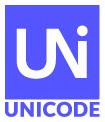![[beta image]](https://cdn.statically.io/img/www.unicode.org/announcements/cldr40-alpha-annc.png) The
Unicode CLDR v41 Alpha is now available for testing. The alpha has already been
integrated into the development version of ICU. We would especially appreciate
feedback from non-ICU consumers of CLDR data. Feedback can be filed at
CLDR Tickets.
The
Unicode CLDR v41 Alpha is now available for testing. The alpha has already been
integrated into the development version of ICU. We would especially appreciate
feedback from non-ICU consumers of CLDR data. Feedback can be filed at
CLDR Tickets.Alpha means that the main data and charts are available for review, but the specification, JSON data, and other components are not yet ready for review. Some data may change if showstopper bugs are found. The planned schedule is:
- Mar 09 — Beta (data)
- Mar 23 — Beta2 (spec)
- Apr 06 — Release
The tooling changes are targeted at the v42 general submission release. They include a number of features and improvements such as progress meter widgets in the Survey Tool.
Finally, the Basic level has been modified to make it easier to onboard new languages, and easier for implementations to filter locale data based on coverage levels.
The following table shows the number of Languages/Locales in this version. (See the v41 Locale Coverage table for more information.)
| Level | Languages | Locales | Notes |
| Modern | 89 | 361 | Suitable for full UI internationalization |
| Moderate | 13 | 32 | Suitable for full “document content” internationalization, such as formats in a spreadsheet. |
| Basic | 22 | 21 | Suitable for locale selection, such as choice of language in mobile phone settings. |
| Total | 124 | 414 | Total of all languages/locales with ≥ Basic coverage. |
Beyond the member organizations of the Unicode Consortium, many dedicated communities and individuals regularly contribute to updating their locales, including:
- Modern: Cherokee, Cantonese, Scottish Gaelic, Sorbian (Lower), Sorbian (Upper)
- Moderate: Asturian [nearly Modern], Breton, Faroese, Fulah (Adlam), Kaingang, Nheengatu, Quechua, Sardinian
- Basic: Bosnian (Cyrillic), Interlingua, Kabuverdianu, Māori, Romansh, Tajik, Tatar, Tongan, Uzbek (Cyrillic), Wolof
Over 144,000 characters are available for adoption
to help the Unicode Consortium’s work on digitally disadvantaged languages
![[badge]](https://cdn.statically.io/img/www.unicode.org/announcements/ynh-infinity.png)
![[badge]](https://cdn.statically.io/img/www.unicode.org/announcements/ynh-infinity.png)

 The repertoire for Unicode 15.0 is now open for early review and comment. During alpha review the repertoire is reasonably mature and stable, but is not yet completely locked down. Discussion regarding whether certain characters should be removed from the repertoire for publication is welcome. Character names and code point assignments are reasonably firm, but suggestions for improvement may still be entertained.
The repertoire for Unicode 15.0 is now open for early review and comment. During alpha review the repertoire is reasonably mature and stable, but is not yet completely locked down. Discussion regarding whether certain characters should be removed from the repertoire for publication is welcome. Character names and code point assignments are reasonably firm, but suggestions for improvement may still be entertained. A new revision of
A new revision of
![[badge]](https://cdn.statically.io/img/lh3.googleusercontent.com/blogger_img_proxy/AEn0k_skMImvh6p0BLd5Iasnk1DM72LdLH2dfdi5KdPx5og_Q20jJqnJVQbJ36PE06r0p-f2od0JOCN1T9ODz6uUV9DiUWg-rscBiYVWGlTqv1GIFI15DKwKWlzbkhOJR_L9vNcCtg=s0-d)
 The Unicode 14.0 core specification is now available in paperback book form with an original cover design by Sophia Tai. This edition consists of a pair of modestly priced print-on-demand volumes containing the complete text of the core specification of Version 14.0 of the Unicode Standard.
The Unicode 14.0 core specification is now available in paperback book form with an original cover design by Sophia Tai. This edition consists of a pair of modestly priced print-on-demand volumes containing the complete text of the core specification of Version 14.0 of the Unicode Standard.

 Unicode® ICU4X 0.4 has just been released. This revision brings an
implementation of
Unicode® ICU4X 0.4 has just been released. This revision brings an
implementation of
![[nest image]](https://cdn.statically.io/img/www.unicode.org/announcements/nest-with-blue-eggs-128px.png)


